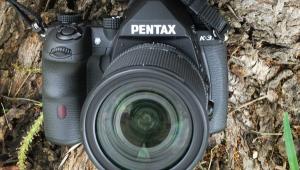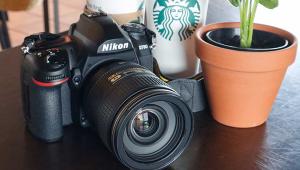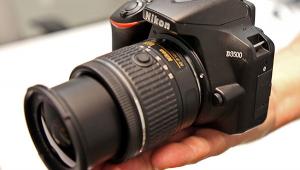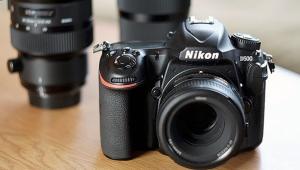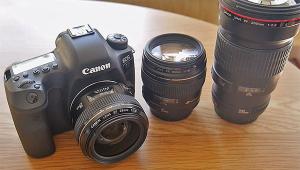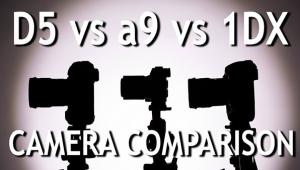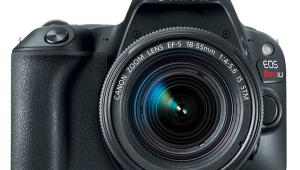Canon’s EOS Rebel XS; Lightest Canon D-SLR To Date Page 2
For those who want to graduate from auto settings there are the usual Exposure modes with three metering patterns, plus Program with Program Shift, which allows you to change equivalent exposures on the fly. You can switch ISO from 100 to 1600, but be aware that in Manual mode the default is ISO 400, though you can change that if desired. You can also choose among three AF modes, and change AF points as well. In JPEG you can get up to 3 frames per second (fps); when you shoot raw or raw + formats you get 1.5 fps; note that with raw or raw + you are quite limited on the burst (frames per continuous shots), with four or five being the maximum. The JPEG settings seem to allow you to just keep shooting and processing as you go. In other words, raw slows the processing capability down considerably, plus does not allow for the Auto Lighting Optimizer.
 |
||
 |
 |
|
|
||
Canon calls its image attribute menu “Picture Styles,” and the defaults give you a clue as to what you’ll get with some of the Scene modes, such as a bit less sharpening for Portrait style and more vivid colors for their Landscape style. Or, you can make up your own styles as you wish with the User Defined setup. One style, Monochrome, is reversible in processing when shooting raw (that is, back to color), but is not when shooting JPEGs. Happily there’s a depth of field preview button and Bulb setting for longer exposure times, plus exposure and flash exposure compensation and auto bracketing (+ or - 2 EV) capability.
 |
 |
|
 |
||
|
||
As mentioned, the XS does incorporate Live View, and, quite unusual for a camera in this class, allows remote Live View through an attached computer using the supplied software. And, give Canon bonus points for stating in bold in the instruction booklet that “…hand holding the camera like a compact digital camera and shoot(ing) while viewing the LCD monitor…can cause blurred images.” This is actually a live Live View, as it will display the brightness level of the scene you are recording. If it is too bright or dark turning the Command dial will correct the exposure on the recorded image. Focus manually, zoom in, use the depth of field preview, and check the 100 percent image on the 2.5” LCD screen and you’re in business.
It would seem that more and more people are having dust problems these days, as we get lots of e-mails about getting rid of pesky spots without damaging the delicate sensor. The self-cleaner comes on every time you power up the XS, but if that does not do the trick there’s a “dust delete data” function as well. You need to run the images through the supplied Canon Digital Photo Professional software to make this work, but it is a kind of auto-spotting mechanism that works well. A nice touch is that this information is appended to all subsequently captured images after it has been recorded, but this also points out the need to update this often, should you go this route.
 |
|
|
While there are Custom Function settings for items such as exposure level increments, noise reduction, and changing shutter button/AE lock functioning, they are modest in number and scope, at least when compared to higher-end models, but they are there should you want to fiddle. A note about noise reduction: for long exposures there’s an Auto setting that relies on the processor to detect objectionable noise and reduce it, or you can just keep it On regardless. As to high ISO noise, be aware that noise reduction is applied at all speeds by default, but if you turn it On in the Custom Functions it will be applied even more so at all speeds, which can be a help in deep shadow areas.
 |
|
|
Handling in the field is as simple as it gets. Movement between menu items is facilitated by creating a My Menu setup, which takes you to the most often used items, something you should do after a few trips around the block with the camera. And image quality is such that even large JPEGs produced excellent 13x19” prints with ease, though don’t expect to match higher-end models in this regard.
Those with more advanced needs in the Canon realm might be better off with the new 50D or other camera in its class from other makers, but for those looking for a camera as a lightweight traveling companion, as a family camera for special events, and who just want a lightweight camera to keep in their day kit, the Rebel XS should do the job nicely. It’s got all the features of modern D-SLRs with a most attractive price point that includes the kit lens. As prices get lower the toss-up between this and higher-end point-and-shoot (integral lens model) digicams will become even more of a difficult decision. The Rebel XS is as good as it gets in the amateur, affordable class.
For more information, contact Canon U.S.A., Inc., One Canon Plaza, Lake Success, NY 11042; (800) 652-2666; www.canonusa.com.
- Log in or register to post comments


